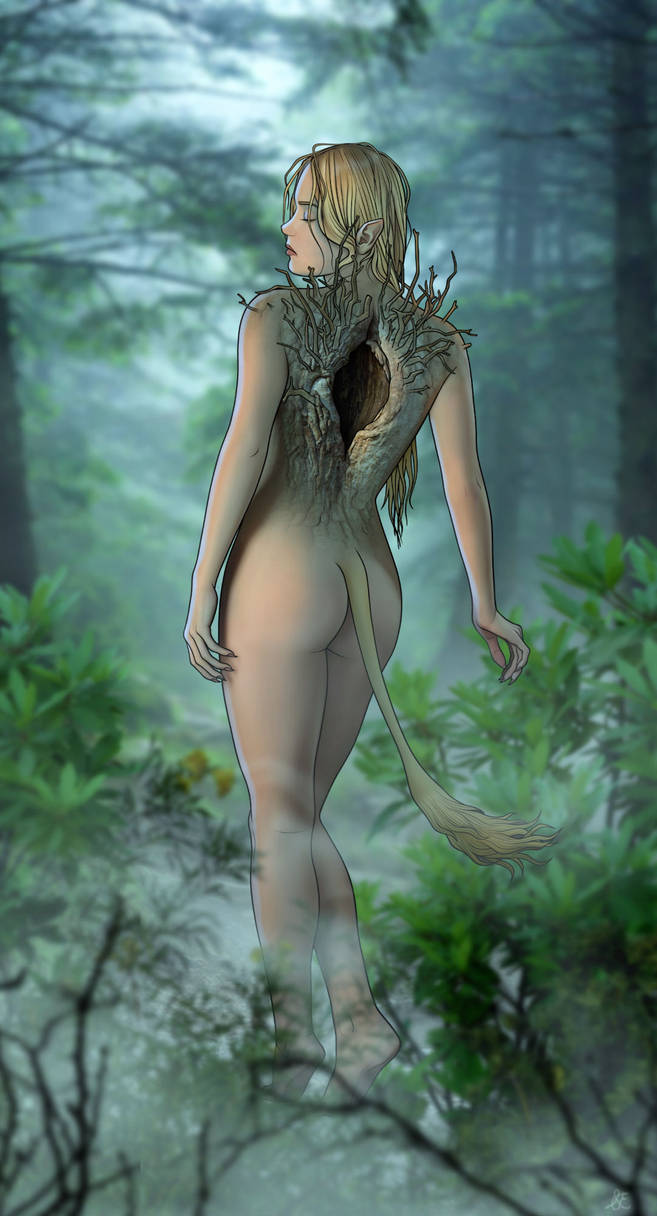the Huldufólk of Tayos.
In Ecuador there's the Tayos' Cave (Cueva de los Tayos/Cave of the Oilbirds), which after Hungarian explorer Janos ‘Juan’ Móricz returns from in the 1960s with a fabulous/dubious tale of discovering a cavernous library of books made of inscribed Golden Tablets. The story gets alot of attention, garnering a series of expeditions, some with Móricz, some without, but the independent ones don't find the tablets, and in the guided ones Móricz instead declines to lead them to the library, claiming that the knowledge contained in the golden books can only be revealed to a ready & responsible contingent of men.
 |
| [Huldra by Steve Ebdon.] |
The aspect of the Huldra losing her tail to become mortal also parallels with the explorer relating the Huldra saying that her coccyx's adornments allow for their longevity, so losing the tail would agree with that.
 |
| [Huldra in her forest by Maya Collins.] |
This matching with the Huldra in the explorer's account, it's recentness in the late 20th century, and that it happens in South America to expand the Hidden Folk's geographical footprint, is what I find so compelling and worth presenting here. Also, the idea the Huldufólk made him forget, and only after his somatic shower incidentally gives him his memory of the encounter back, would add an ability which allows the Huldufólk to effectively stay hidden all this time.
Guillermo Maytorena IV knew there was something special in the Norse Lore when he picked up a copy of the d'Aulaires' Norse Gods and Giants at age seven. Since then he's been fascinated by the truthful potency of Norse Mythology, passionately read & studied, embraced Ásatrú, launched the Map of Midgard project, and spearheaded the neologism/brand NorsePlay. If you have employment/opportunities in investigative mythology, field research, or product development to offer, do contact him.

Comments
Post a Comment